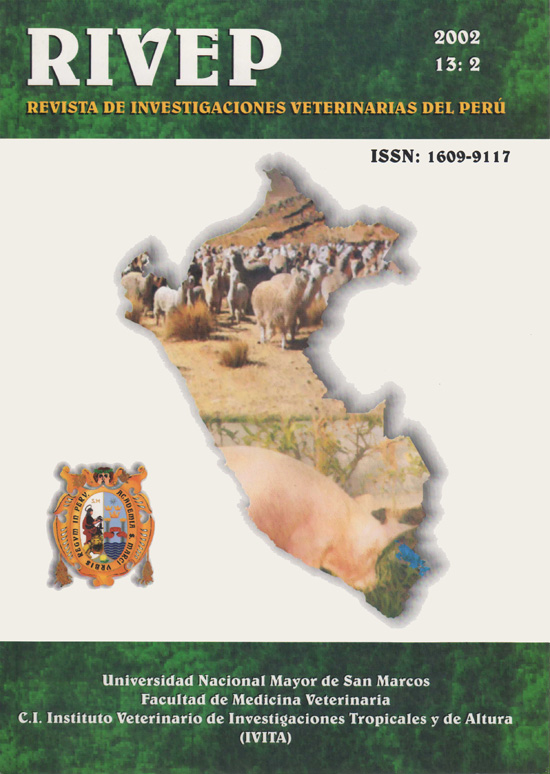RIESGO DE CONTRAER ENFERMEDADES PARASITARIAS EN LOS PARQUES PÚBLICOS DE LIMA Y CALLAO
DOI:
https://doi.org/10.15381/rivep.v13i2.7337Keywords:
Toxocara, parks, ascarides, migrant larva, zoonosisAbstract
The objective of this paper was to determine the contamination with Toxocara sp. in public parks ofMetropolitan Lima and Callao. Turf samples were collected from 558 out ofthe 1,964 parks existing in Lima and Callao (108, 98, 151and123 from the northern, southern, eastern and western part ofLima and 78 from Callao) during December 1998 and August 199 using the double "W" method. Samples were processed by the flotation method using ClNa saturated solution. A sample was considered positive when presented at least one egg of Toxocara sp. The eggs were incubated and orally inoculated to mice and quails to verify the viability of eggs. Parks were grouped according to the level of conservation as good (well covered with grass), moderate (around 50% covered with grass) and poor conserved (without grass); and according to the social economic level as high, middle-high, middle, middle-low and low. The prevalence rate was 34 ± 9% (mean ± confidence interval), 30±9,41±8, 63 ± 9 and 37±11 % forparks innorthern, southern, · eastern and western part ofLima and Callao, respectively. Contamination level was 73, 49 and 16% in parks with good, moderate and poor level of conservation, whereas according to the social economic level was 73, 62, 47, 29 and 30% in parks with high, middle-high, middle, middle-low and low social economic levels, respectively. Abundant green material and high humidity in good conserved parks would favour conservation of Toxocara sp. eggs. On the other hand, the absence of Toxocara sp. eggs in poorly conserved parks would be dueto direct solar radiation on the eggs. Finally, inoculated mice and quails developed migrant larva, which is indicative of the infective capacity of the eggs.Downloads
Downloads
Published
Issue
Section
License
Copyright (c) 2002 Amanda Chávez V., Eva Casas A., Marcos Serrano M., Junett Cajas U., José Velarde O., Virgilio La Rosa V., Juan López T.

This work is licensed under a Creative Commons Attribution-NonCommercial-ShareAlike 4.0 International License.
AUTHORS RETAIN THEIR RIGHTS:
a. Authors retain their trade mark rights and patent, and also on any process or procedure described in the article.
b. Authors retain their right to share, copy, distribute, perform and publicly communicate their article (eg, to place their article in an institutional repository or publish it in a book), with an acknowledgment of its initial publication in the Revista de Investigaciones Veterinarias del Perú (RIVEP).
c. Authors retain theirs right to make a subsequent publication of their work, to use the article or any part thereof (eg a compilation of his papers, lecture notes, thesis, or a book), always indicating the source of publication (the originator of the work, journal, volume, number and date).










